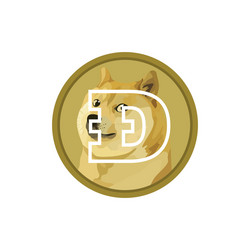
The inception of the notion of digital or virtual currency can be traced back to 1983 when American cryptographer David Chaum pioneered the concept. In his conference paper, he articulated the vision of cryptographic electronic money that was both anonymous and liberated from the grasp of a central authority.
Over the subsequent two decades, diverse entities embarked on research and experimentation to build upon Chaum’s groundbreaking concept of digital currency. Chaum himself ventured into the development of a proto-cryptocurrency known as Digicash in 1995. However, it took an additional two decades to effectively actualize the launch of a cryptocurrency and ensure widespread accessibility.
Since its emergence, cryptocurrency has undergone numerous undulations and has not been immune to criticism. Economists have periodically labeled it as an economic bubble.
Despite the hurdles and controversies, it has become increasingly evident that cryptocurrency has solidified its position in the financial landscape. In this article, we spotlight the 11 earliest and still alive cryptocurrencies that emerged during the foundational years of digital currency.
Other Articles
Bitcoin (BTC)

Released: 3.1.2009
The story of Bitcoin began in 2007 when an individual or a group of developers started working on Bitcoin as a peer-to-peer (P2P) cryptocurrency. At that time, Bitcoin was viewed as just another project of digital currency, which, like many others in the world of traditional currencies, was not expected to survive. However, Bitcoin was different from the very beginning. As evident, its fate was not to skyrocket and then fall, as was the case with many previous digital currencies.
The first significant date in the Bitcoin story was August 18, 2008, when the domain bitcoin.org was registered on anonymousspeech.com. This website allows the registration of domains completely anonymously, making it ideal for Bitcoin. Ironically, today this website even enables payments in Bitcoin.
However, the date that boldly etched itself into the history of Bitcoin is January 3, 2009. The clock showed 18:15:05 GMT when the Genesis block, the very first block of Bitcoin, was mined (initial block reward was 50 BTC per block) .
Litecoin (LTC)

Released: 7.10.2011
The main feature of Litecoin is the use of the Scrypt algorithm. This Scrypt algorithm, developed by Colin Percival in 2009, is designed to mitigate the hardware intensity of mining (using ASICs). Instead, mining requires a significant amount of memory for calculations. Litecoin is much simpler to mine on CPU or GPU and tends to consume less energy compared to the use of the SHA-256 algorithm in Bitcoin. As a result, Scrypt favors the majority of individual miners. However, ASIC devices supporting Scrypt have already been designed.
Litecoin came into existence on October 7, 2011. Its creator, Charlie Lee, also known as satoshilite and a Google employee, introduced one of the first altcoins to the world with its creation. The main feature of Litecoin is the use of the Scrypt algorithm. This Scrypt algorithm, developed by Colin Percival of Tarsnap Inc in 2009, is designed to reduce the hardware intensity of mining. Instead, mining requires a significant amount of memory for calculations.
Namecoin (NMC)

Released: 18.4.2011
Namecoin is a cryptocurrency that is mined using the same software as Bitcoin. Namecoin is based on the code of a Bitcoin clone and utilizes the same algorithm. Similar to Bitcoin, Namecoin is capped at 21 million coins.
The creators of Namecoin describe this technology as an “experimental open-source technology that enhances the decentralization, security, resistance to censorship, privacy, and speed of some components of internet infrastructure, such as DNS and identity.” DNS, the Domain Name System, is a mechanism through which domain identities are linked to numerical IP addresses worldwide.
Namecoin paved the way for various cryptographic protocols and functions, including merged mining and decentralized DNS. It was also the first solution to the so-called Zooko’s Triangle, a longstanding problem in creating a system that is simultaneously secure, decentralized, and human-readable.
Peercoin (PPC)

Released: 12.8. 2012
Peercoin was created by Scott Nadal and Sunny King. Peercoin is a cryptocurrency and payment system that was launched in 2012. Peercoin is unique in that it utilizes a hybrid consensus mechanism of proof-of-work/proof-of-stake. This combination allows for a secure and sustainable network operation. It is true that Peercoin was the first cryptocurrency to introduce this hybrid consensus model, meaning it relies on both proof-of-work (proof of labor) and proof-of-stake (proof of ownership).
It is a decentralized digital currency that utilizes cryptography to secure transactions and control the creation of new units. Peercoin is unique in that it also has a fixed supply of 21 million coins. This feature makes Peercoin more stable compared to other cryptocurrencies that may be influenced by inflation or deflation.
Ripple (XRP)

Released: June 2012
XRP is a cryptocurrency developed, released, and partially managed by the American company Ripple Labs. XRP is one of the many products in the Ripple Labs portfolio created to enhance the efficiency of cross-border payments, particularly in the banking sector. It serves as the native digital currency on the XRP Ledger, an open, permissionless distributed ledger with the ability to settle transactions in 3 to 5 seconds.
XRP was originally designed to have much faster and cheaper transactions than other cryptocurrencies, making it more suitable for everyday payments. However, it is used infrequently in this way as its developers have shifted their focus towards the institutional use of XRP.
Currently, there are 55 billion XRP tokens in circulation, while its total supply amounts to 100 billion XRP tokens.
Dogecoin (DOGE)

Released: 6.12.2013
Dogecoin was created by software engineers Jackson Palmer and Billy Markus. They launched the project in December 2013 as a decentralized cryptocurrency for instant payments. Originally, Dogecoin was created as a “hard fork” of the no longer existing Luckycoin, itself a fork of Litecoin (LTC). So, it’s a fork of a fork (another fork). Dogecoin entered the cryptocurrency market with a reputation as a more humorous coin – a quality that the community greatly appreciated. Without a CEO or a governing body behind DOGE, Dogecoin has been sustained by its enthusiastic holders who have proven to be quite loyal over the years.
While DOGE originated as a meme, in 2021, Dogecoin became one of the largest cryptocurrencies, experiencing a skyrocketing market capitalization of 5000%. Its newfound popularity was largely influenced by Elon Musk and Snoop Dogg.
Dash (DASH)

Released: January 2014
Dash (originally named XCoin and Darkcoin) is an open-source, peer-to-peer cryptocurrency known for its instant transactions while maintaining privacy. Decentralized Autonomous Organization (DAO) oversees the decentralized governance and funding of the Dash network.
The origins of this cryptocurrency date back to 2014 when its predecessor, the cryptocurrency XCoin, was introduced to the market on January 18, 2014. Just a few days later, on January 28 of the same year, the name was changed to Darkcoin. It wasn’t until March 25, 2015, that the name Dash, an abbreviation for “Digital Cash,” was first introduced. The creator, Evan Duffield, was involved not only in the naming of the currency but also faced a serious issue that led to controversial mining early in the currency’s existence.
The total supply of Dash is capped at 18 million. Currently, almost 12 million, has been mined.
Neo (NEO)

Released: 2014
The cryptocurrency NEO originated under the name AntShares (ANS) in 2014. AntShares, founded by Da Hongfei and Erik Zhang, was recognized as the first Chinese blockchain platform. In 2016, responding to the increasing interest in AntShares and the need for a blockchain solution that would meet the requirements of both government regulators and private companies, Da and Erik founded OnChain, a company providing blockchain-based financial services. In 2017, AntShares was renamed to NEO.
As a concept, Neo is a smart contracts ecosystem similar to Ethereum. It allows its users to automate the storage and exchange of digital assets. To keep pace with established smart contracts implementations, Neo leverages evolving technologies and collaborates with Chinese authorities to achieve the aforementioned goal of a “smart economy.”
Monero (XMR)

Released: 18.4.2014
Monero is an open-source cryptocurrency created with the aim of enhancing privacy in transactions. It emphasizes anonymity, scalability, and decentralization.
Monero utilizes a so-called obscured public ledger, allowing anyone to send and receive transactions on it, while external observers cannot determine the source, size, or recipient of these transactions.
XMR, the abbreviation for Monero, employs the Proof of Work consensus algorithm and regularly releases updates to its blockchain to prevent profitable mining on ASIC mining machines compared to other mining hardware.
Unlike cryptocurrencies that are derivatives of Bitcoin, Monero’s Proof of Work algorithm is based on CryptoNight, derived from the CryptoNote protocol.
The most significant difference between Monero and other well-known privacy coins (such as Bitcoin, ZCash, etc.) is that Monero transactions are private by default from the blockchain’s inception. In contrast, the privacy of transactions in other privacy coins is usually adjustable.
Monero originated as a hard fork of the first implementation of the CryptoNote protocol, Bytecoin. It was initially named Bitmonero, later evolving into the final name Monero, which translates to “coin” in Esperanto. Monero is backed by seven main developers, five of whom remain anonymous, and the other two are David Latapie and Riccardo Spagni. As a project open-sourced, more than 500 developers have contributed to Monero’s code.
Stellar (XLM)

Released: 31.7.2014
Stellar Lumens (XLM) are tokens issued as the native assets of the Stellar Development Foundation, a non-profit organization founded by Ripple co-founder Jed McCaleb in 2014. While some may think of Stellar as a fork of Ripple, upon closer examination, these two actually have more differences than similarities. According to McCaleb, they are entirely different codes. While the codes differ, and Stellar would argue that they significantly improved upon Ripple’s issues, the key difference lies in their vision for the future of cryptocurrency.
While Ripple is for-profit based, Stellar plans to cover operational costs by allocating 5 percent of the total available lumens for its own use, along with accepting donations. While Ripple targets the banking sector, Stellar focuses on individuals.
Ethereum (ETH)

Released: 30.7.2015
Ethereum is the second most well-known and capitalized cryptocurrency of today. While it significantly trails Bitcoin in both of these statistics, it still boasts several milestones. Firstly, Ethereum is the most popular blockchain for creating smart contracts and decentralized applications, making it a clear leader in the field of platform cryptocurrencies and blockchains focused on the decentralized finance (DeFi) world. Thanks to this, Ethereum is considered one of the very first blockchains labeled as second-generation blockchains.
Ethereum is an open-source, fully decentralized platform based on a decentralized database in the form of a blockchain and a decentralized virtual machine. Its main difference from Bitcoin lies in the ability for sophisticated scripting, enabling the issuance of smart contracts directly on the main layer of its blockchain. This capability allows Ethereum to support decentralized applications, issue native tokens directly on the Ethereum network, and more.
A crucial component for Ethereum is its Turing-complete virtual machine called the Ethereum Virtual Machine (EVM). The EVM is responsible for ensuring the functionality of smart contracts (which, in turn, enable the operation of decentralized applications). It also acts as a virtual device that effectively ensures the security of the Ethereum network by utilizing the computational power of the entire Ethereum network. In practice, the EVM defines the rules for linking each new block to the Ethereum blockchain. Although it can be considered the central entity of Ethereum, it is governed by all nodes in the network (connected devices for this purpose).







